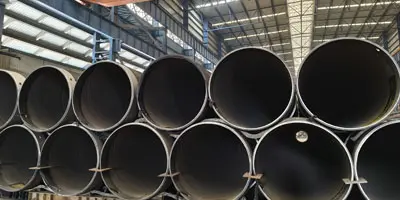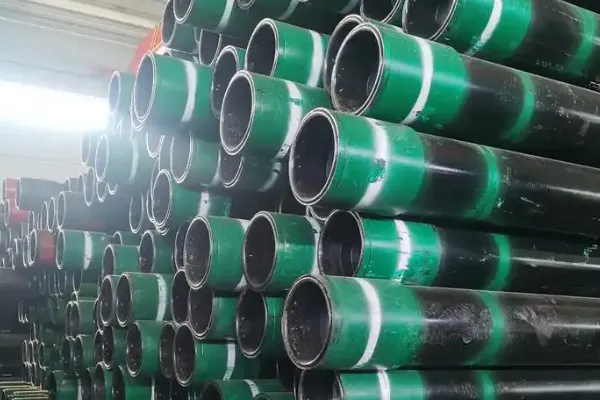Petroleum casing steel is an essential component in the oil and gas industry, primarily used to support and protect the walls of oil and gas wells. The quality of petroleum casing steel is determined by various specifications and standards, which govern its manufacturing, inspection, and testing procedures. In this article, we’ll delve into the key grades and acceptance standards for petroleum casing and tubing, highlighting the specifications outlined by the American Petroleum Institute (API).
Key API Standards for Petroleum Casing Pipe
Several important API standards define the specifications and testing methods for petroleum casing pipe. These standards ensure that the material meets the requirements for strength, durability, and safety in harsh oilfield environments.
API Spec 5B: Threading, Gauging, and Thread Inspection
API Spec 5B outlines the requirements for the threading, gauging, and inspection of casing and tubing, and line pipe threads. It includes specifications for API thread gauges and other threading tools, as well as the inspection methods for different types of pipe connections, such as line pipe, round thread casing, buttress thread casing, and integral casing connections.
API Spec 5CT: Casing and Tubing Specifications
API Spec 5CT covers the delivery and technical requirements for steel pipes, including casing, tubing, plain-end casing liners, and short joints. It applies to various thread types in casing, such as:
Short round thread casing (STC)
Long round thread casing (LTC)
Buttress thread casing (BC)
Integral casing (XC)
Non-upset tubing (NU)
External upset tubing (EUE)
Integral pup joint tubing (IJ)
API RP 5A5: Field Inspection of New Casing, Tubing, and Plain-End Drill Pipe
API RP 5A5 provides recommendations for the field inspection of new casing, tubing, and drill pipes. It outlines the requirements for personnel qualifications, inspection methods, equipment calibration, and standard procedures for assessing defects and marking inspected pipes. Though not intended as a basis for acceptance or rejection, this standard ensures that pipes meet the necessary quality for use in the field.
API Spec 5D: Drill Pipe Specifications
API Spec 5D governs the specifications for
drill pipes used in drilling operations. It provides guidelines for the strength and material characteristics of drill pipes, ensuring they meet rigorous industry standards.
API Spec 5L / ISO 3183: Line Pipe Specifications
API Spec 5L and ISO 3183 describe the manufacturing requirements for steel pipes used in pipeline transportation systems in the petroleum and natural gas industries. The standard divides pipe specifications into two product specification levels (PSL 1 and PSL 2), with PSL 2 offering more stringent requirements for pipe strength and testing.
Common Grades of Casing and tubing
Petroleum casing steel comes in several grades, each offering varying levels of strength and corrosion resistance. The most commonly used grades include:
J55: One of the most commonly used grades in the oil and gas industry. It provides moderate strength and is typically used for standard oil and gas wells that are not exposed to extreme conditions.
K55: Similar to J55 but with slightly higher yield strength. It is often used in less demanding applications.
L80: This grade offers higher strength than J55 and is resistant to hydrogen sulfide (H2S) environments. It is commonly used for wells with sour gas.
N80: This is a low-carbon steel alloy that offers better strength and resistance to corrosion. It is frequently used in sour gas wells and in conditions where resistance to cracking is essential.
P110: This grade is used in more challenging environments, with higher strength and resistance to corrosion. It is commonly used in deep wells with high pressure.
13Cr: A chromium alloy steel that offers excellent resistance to corrosion, especially in sour gas environments. It is often used for offshore and deepwater drilling.
22Cr: A high-chromium alloy steel that provides superior resistance to corrosion in highly acidic environments. It is used in more aggressive oil and gas reservoirs.
Each grade of casing and tubing is suited to specific well conditions, such as pressure, temperature, and the presence of corrosive elements like hydrogen sulfide (H2S) and carbon dioxide (CO2).
L80 is available in different variants, such as L80-1, L80Cr9, and L80Cr13, which offer different mechanical properties depending on the intended application.
Acceptance and Quality Control
The quality of petroleum casing steel is assessed through rigorous testing procedures, which include:
Heat Treatment: Proper heat treatment is essential to enhance the mechanical properties of the casing steel.
Non-Destructive Testing (NDT): NDT methods such as ultrasonic testing and magnetic particle testing are used to detect internal and surface defects without damaging the casing.
Hydrostatic Pressure Testing: Steel pipes undergo hydrostatic pressure tests to ensure they can withstand high-pressure conditions.
Thread Testing: Threads are tested for smoothness and integrity to ensure proper connections and avoid leaks or failures.
Defects and Requirements for Surface Quality
Casing pipes must meet strict surface quality standards. Common defects that must be avoided include:
Wrinkles
Fine lines
Lamination
Cracks
Scars
These defects must be completely removed, with the removal depth not exceeding 12.5% of the nominal wall thickness. Any external defects in the casing coupling, such as wrinkles, fine lines, or cracks, are also unacceptable. The surface of the casing and coupling threads must be smooth, with no burrs, cracks, or other defects that could compromise strength or sealing ability.
Chemical Composition and Physical Properties of Casing and Tubing
The chemical composition and physical properties of casing steel must comply with the latest version of API Spec 5CT. For chemical analysis, samples should be prepared according to ASTM E59 and tested according to ASTM E350. Physical properties tested include:
Tensile strength
Hardness tests (according to ASTM E18 or E10)
Sulphide stress corrosion cracking tests
Impact testing (according to ASTM A370 and ASTM E23)
Conclusion
Petroleum casing steel must meet a range of rigorous standards to ensure its durability and reliability in oil and gas wells. By adhering to the API specifications, manufacturers ensure the casing pipes can withstand the demanding conditions of deep-well drilling, providing a secure and long-lasting solution for oil and gas extraction. Understanding these standards and testing methods is crucial for selecting the right casing steel for each application, ensuring the safety and efficiency of oilfield operations.






 English
English Español
Español بالعربية
بالعربية











 Phone :
Phone :  Whatsapp :
Whatsapp :  Email :
Email : 


